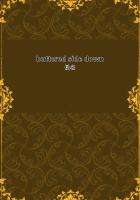This lordly tomtit, with his jaunty crest, keeps up a persistent whistle at you as he flits from tree to tree, leading you deeper into the forest, calling out "Here-here-here!', and looking like a pert and jaunty little blue jay, minus his gay clothes. Mr. Nehrling translates one of the calls "Heedle-deedle-deedle-dee!" and another "Peto-peto-peto-daytee-daytee!" But it is at the former, sharply whistled as the crested titmouse gives it, that every dog pricks up his ears.
Comparatively little has been written about this bird, because it is not often found in New England, where most of the bird litterateurs have lived. South of New York State, however, it is a common resident, and much respected for the good work it does in destroying injurious insects, though it is more fond of varying its diet with nuts, berries, and seeds than that all-round benefactor, the chickadee.
CANADA JAY (Perisoreus canadensis) Crow and Jay family Called also: WHISKY JACK OR JOHN; MOOSE-BIRD; MEAT BIRD; VENISONHERON; GREASE-BIRD; CANADIAN CARRION-BIRD; CAMP ROBBER; [GRAYJAY, AOU 1998]
Length -- 11 to 12 inches. About two inches larger than the robin.
Male and Female -- Upper p arts gray; darkest on wings and tail;back of the head and nape of the neck sooty, almost black.
Forehead, throat, and neck white, and a few white tips on wings and tail. Underneath lighter gray. Tail long. Plumage fluffy.
Range -- Northern parts of the United States and British Provinces of North America.
Migrations -- Resident where found.
The Canada jay looks like an exaggerated chickadee, and both birds are equally fond of bitter cold weather, but here the similarity stops short. Where the chickadee is friendly the jay is impudent and bold; hardly less of a villain than his blue relative when it comes to marauding other birds' nests and destroying their young. With all his vices, however, intemperance cannot be attributed to him, in spite of the name given him by the Adirondack lumbermen and guides. "Whisky John" is a purely innocent corruption of "Wis-ka-tjon," as the Indians call this bird that haunts their camps and familiarly enters their wigwams. The numerous popular names by which the Canada jays are known are admirably accounted for by Mr. Hardy in a bulletin issued by the Smithsonian Institution.
"They will enter the tents, and often alight on the bow of a canoe, where the paddle at every stroke comes within eighteen inches of them. I know nothing which can be eaten that they will not take, and I had one steal all my candles, pulling them out endwise, one by one, from a piece of birch bark in which they were rolled, and another peck a large hole in a keg of castile soap. A duck which I had picked and laid down for a few minutes, had the entire breast eaten out by one or more of these birds. I have seen one alight in the middle of my canoe and peck away at the carcass of a beaver I had skinned. They often spoil deer saddles by pecking into them near the kidneys.
They do great damage to the trappers by stealing the bait from traps set for martens and minks and by eating trapped game. They will sit quietly and see you build a log trap and bait it, and then, almost before your back is turned, you hear their hateful ca-ca-ca! as they glide down and peer into it. They will work steadily, carrying off meat and hiding it. I have thrown out pieces, and watched one to see how much he would carry off. He flew across a wide stream, and in a short time looked as bloody as a butcher from carrying large pieces; but his patience held out longer than mine. I think one would work as long as Mark Twain's California jay did trying to fill a miner's cabin with acorns through a knot-hole in the root. They are fond of the berries of the mountain ash, and, in fact, few things come amiss; I believe they do not possess a single good quality except industry."One virtue not mentioned by Mr. Hardy is their prudent saving from the summer surplus to keep the winter storeroom well supplied like a squirrel's. Such thrift is the more necessary when a clamorous, hungry family of young jays must be reared while the thermometer is often as low as thirty degrees below zero at the end of March. How eggs are ever hatched at all in a temperature calculated to freeze any sitting bird stiff, is one of the mysteries of the woods. And yet four or five fluffy little jays, that look as if they were dressed in gray fur, emerge from the eggs before the spring sunshine has unbound the icy rivers or melted the snowdrifts piled high around the evergreens.
CATBIRD (Galcoscoptes carolinensis ) Mocking-bird family Called also: BLACK-CAPPED THRUSH; [GRAY CATBIRD, AOU 1998]
Length -- 9 inches. An inch shorter than the robin.
Male and Female -- Dark slate above; below somewhat paler; top of head black. Distinct chestnut patch under the tail, which is black; feet and bill black also. Wings short, more than two inches shorter than the tail.
Range -- British provinces to Mexico; west to Rocky Mountains, to Pacific coast. Winters in Southern States, Central America, and Cuba.
Migrations -- May. November. Common summer resident, Our familiar catbird, of all the feathered tribe, presents the most contrary characteristics, and is therefore held in varied estimation -- loved, admired, ridiculed, abused. He is the veriest "Dr. Jekyll and Mr. Hyde" of birds.















